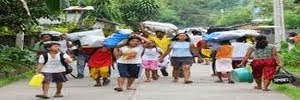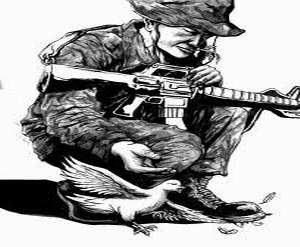|
From the Website of DILG
links: http://www.dilg.gov.ph/news.php?id=768&newsCategory=Central DILG Central NewsPeoples Organizations identify P20-Billion anti-poverty projectsJanuary 30, 2014Roxas noted that the National Government has allocated a total of P20 billion this year to fund various poverty-alleviation projects that were identified by local government units in coordination with civil society organizations in their communities. Roxas said the projects are being implemented under the Grassroots Participatory Budgeting Process (GPBP), a new initiative that encourages people’s participation not only in project identification but also in monitoring project implementation. “Sa ilalim ng GPBP, gusto nating tiyakin na may partisipasyon ang ordinaryong mamamayan sa pagpili ng mga proyektong pakikinabangan ng kanilang komunidad,” Roxas said. “Maliban sa pagpili ng mga proyekto, mahalagang mabantayan din ng mga mamamayan ang pagpapatupad ng mga proyekto para masiguro na wala itong bahid ng katiwalian,” he added. For year 2014, the National Budget earmarked P20.03 billion for 19,533 projects identified through the GPBP in 1,226 local government units. The bulk of the P20-billion budget were sourced from Department of Agriculture (P9.286 billion); Department of Social Welfare and Development (DSWD); (P2.638 billion); DILG (P2.476 billion); Department of Education (P1.449 billion); and Department of Health (P1.355 billion). Other implementing agencies include Department of Agrarian Reform (P574 million); Department of Trade and Industry (P549 million); Department of Labor and Employment (P507 million); TESDA (P423 million); Department of Environment and Natural Resources (P417 million); Department of Trade (P175 million); Department of Energy (P97 million); and National Electrification Administration (P78 million). Roxas explained that the GPBP institutionalizes the Aquino government’s “bottom-up” approach in budget preparation process, which was introduced in 2013. “For thefirst time in our government’s history, we prepared the national budget in 2013 using a breakthrough ‘bottom-up’ approach. Previously, the national budget was crafted from the top, with government leaders deciding what projects to fund in the local level,” he pointed out. “Ngayon, kinikilala natin ang kapangyarihan ng mga lokal na pamahalaan na alamin kung ano talaga ang mga proyektong kailangan nila para matugunan ang problema ng kahirapan sa kanilang komunidad. Ito ang gabay natin sa pagbubuo ng National Budget,” he added. Roxas stressed that the GPBP likewise seeks toempower civil society organizations and citizens’ groups to engage local government and national government agencies and make them more responsive to the people’s needs. The following processes were the main components of the bottom-up approach as specified in the Joint Memorandum Circular No. 4 that guides the GPBP preparation for the FY2015 round: (i)Preparation of poverty reduction planning and budgeting:NAPC and DILG to organize social preparation activities for CSOs and LGUs on participatory planning and budgeting. Activities include Regional Poverty Reduction Action Teams (RPRATs) orientation, CSO assembly, selection of Local Poverty Reduction Action Teams (LPRATs) consisting of both LGUs and CSOs, LPRATs orientation, and updating of and validation of socio-economic data which informs the Local Poverty Reduction Action Plans (LPRAPs). (ii)Conduct of LPRAP workshop and priority project identification:LPRAP workshops are to be conducted with active participation of CSOs to formulate LPRAPs and to identify priority poverty reduction projects with budget based on relevant socio-economic data. (iii)Endorsement of CSOson the list of priority projects and budget as proof of genuine participation. (iv)Approval by theSanggunianbefore the list is given to national government. (v)Submission of list of priority projects:LPRATs to submit the list, endorsed by the CSOs and approved by theSanggunian, to the RPRATs through DILG Regional Offices (ROs). (vi)Consolidation of the list of priority projects by Region:DILG ROs will consolidate the lists and send the consolidated lists to RPRATs and NAPC. (vii)Validation and review of priority projects by RPRAT:RPRATs will review and validate the proposed projects. Once approved, RPRATs will submit the list of validated projects to NAPC and the Regional Development Council (RDC). NAPC will then consolidate all the submissions of RPRATs and present it to the BUB oversight agencies for approval. (viii)Integration of LGU projects in the budgets of participating agenciesand submission to DBM. (ix)Provision of counterpart funds:LGUs will providecounterpart funds as stipulated in the JMC. (x)Project implementation:LGUs that meet the requirements stipulated in the JMC, such as being the recipient of DILG’s seal of good housekeeping and implementation of Public Financial Management Improvement Plan as determined by the Department of Budget and Management (DBM), will implement the priority projects. |
DILG Website
http://www.dilg.gov.ph/
links:
links:
http://www.dilg.gov.ph/news.php?id=769&newsCategory=Central
OTHER HUMAN RIGHTS PROMOTIONS WEBSITES
Human Rights Advocacy Promotions | Human RightsHome - Human rights Promotions Website
PROTECTION AND PROMOTION OF HUMAN RIGHTS
-----------------------------------------------------------------------------------------------
------------------------------------------------------------
-----------------------------

























0 comments:
Post a Comment